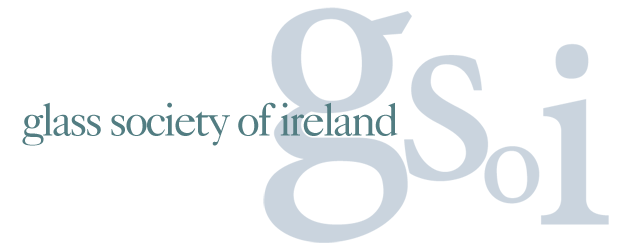The Glass Society of Ireland was delighted to attend Jeremy
Lepisto’s talk at the National College of Art and Design on Tuesday. He is very
open about his work both conceptually and technically which made for a
fascinating talk.
Lepisto grew up in the glass capital of America, Toledo, Ohio. This industrial setting has made a huge impact on his aesthetic. Looking at his body of work you can
see hard architectural lines as well as iconic structure such as his water
towers. These visual influences are only one part of the narrative which
resonates from his childhood into his present day life.
The work ethic in the family
was strong and Lepisto himself worked from an early age. He spoke fondly of his
family and specially his Grandfather ‘Pops’. Lepisto tells of how his
Grandfather took great pride in his work and believed “a firm foundation is the
key to a successful structure”. This sentiment has left its mark and this can
be seen not only in the care and quality of the art works Lepisto produces, but
also in the images he showed of his immaculate workspaces.
Lepisto describes his work
as self portraits, each one reflecting his current situation and how it relates
to his present environment. In doing this he creates a body of work which
encompasses both the banality and the complexity of life simultaneously.
This work, inspired by a
sense of place and strong relationship with the visual experiences available in
the United States, came up against a challenge when Lepisto and his wife made
the decision to move to Australia. Away from his support network and the
landscapes which appear as such an integral part of his early work Lepisto had
to tackle his art from new angles.
The most recent series, the
container series, looks at transition and how life in one location can be
packaged and moved another location. The lack of imagery in this series stems
from a concern about appropriation of Australian vernacular architecture. This
landscape, not yet ingrained in Lepisto sense of self, perhaps in time will
begin to creep into new work. The auto biographical element in the work is
strong and Lepisto is very open about the events which inspired the works.
In an earlier series building blocks the
pieces can be moved to form double meanings. In one position the images build
from the edges into a cityscape, arranged in their second configuration to
buildings start at the edges of the work and fade into a blank space in the
centre. Lepisto explained how this series was made in a period where he and his
wife where living in different locations. He drew our attention to the position
of two small post boxes in the imagery and the piece changed from a clever
puzzle to an eloquent expression of the pain of being apart and the joys of
being reunited.
Lepisto’s practice is
visually very beautiful and would be pleasing as studies of environment alone.
However, it is the ability to produce subtle meanings in the works which push
them to a new level of significance.
For More Info on Jeremy's work click HERE
by Fiona Byrne






Whoa.
ReplyDeleteThank you.
Sincerely,
Jeremy